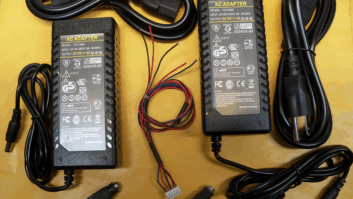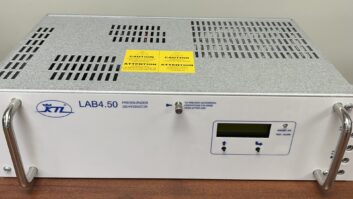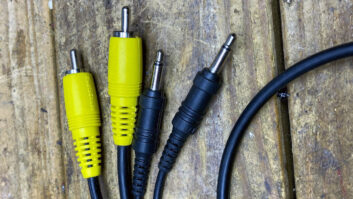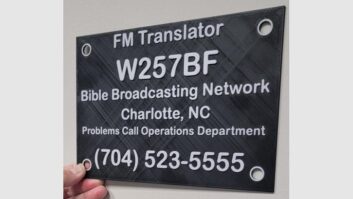For our readers in the northern hemisphere, fall community sporting events are about to find their way onto many stations.
Here’s a neat project put together by Frank Hertel, principal with Newman-Kees RF Measurements and Engineering, ideal for your remote broadcasts.
When you are broadcasting from a crowded playing field or stadium, crowd noise may make it hard for your listeners to hear the announcer. What you need is an inexpensive and easy way to attenuate the crowd noise.
[Check Out More of Workbench Here]
Frank’s noise-canceling mic is a good solution. By connecting two mics out of phase and using a modified mating connector, you cancel out crowd noise picked up by both mics, which are 180 degrees opposed. The talent mic is clear, with the crowd noise greatly attenuated.
Frank’s idea was the result of a conversation with fellow engineer Phil Bailey around their workbench, preparing for the Evansville Fall Festival Parade, rumored to be only second in size and attendance to Mardi Gras.
The parade was less than a week away and the engineers needed a fix to control the crowd noise. Although they had tried several “noise canceling” microphones, the noise was still distracting.
As they talked, Phil recalled an incident that happened during the taping of a TV show. An intern had wired up a new microphone cable out of phase, with Pins 2 and 3 reversed on one end of the new cable.
Three guests were sitting alongside one another. A microphone, properly phased, was placed between the first and second guest. The out-of-phase mic was placed between the second and third guests. As a result, the guest in the middle was picked up by both mics.
But with one of them out of phase, the audio of the middle guest was subtracted from the combined mix. In this situation, noise cancellation was undesired, so they had to stop taping to fix the problem.
But the TV show’s wiring mistake became the fall festival’s crowd noise solution.
In use, Frank selected two Electro-Voice 635A omnidirectional mics. Imagine your reporter holding the top microphone within about 2 or 3 inches of their mouth, while the bottom microphone is pointing away from the mouth. Crowd noise is picked up equally by each 635A mic, thus the crowd noise is suppressed — virtually canceled!
You can experiment with pattern types; Frank finds that it works best with identical omnidirectionals, and the 635As are inexpensive, under $150 each.
The first photo shows the parts you’ll need to construct this project. Once you’ve gathered them, follow Frank’s step-by-step instructions.
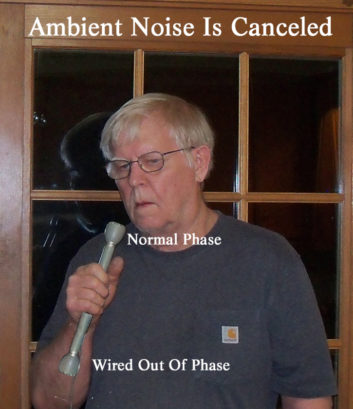
Email me to let our readers know how well this works out for you during the upcoming sports season.
John Bisset, CPBE, has more than 50 years of broadcast engineering experience. He handles western U.S. radio sales for the Telos Alliance and is a past recipient of the SBE’s Educator of the Year Award.
Workbench submissions are encouraged and qualify toward SBE recertification. Email [email protected].





